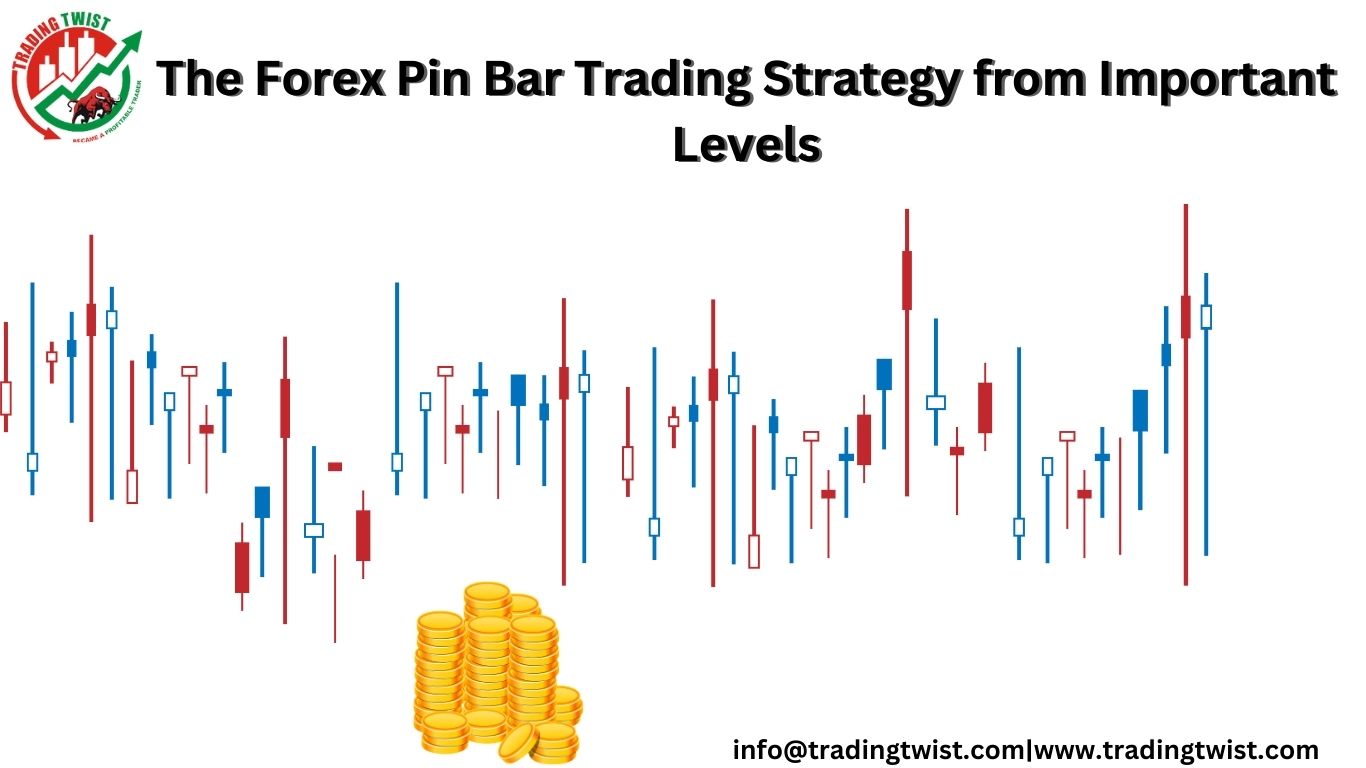
Pin bars are formed when the price of an asset moves in a particular direction, but then abruptly changes direction, leaving behind a long tail or wick. The pin bar trading strategy involves identifying these patterns and using them to enter trades in the opposite direction of the prevailing trend. For example, if the market is in an uptrend, a pin bar formation that appears at a resistance level could be used as a signal to enter a short trade.
One of the benefits of the Forex pin bar trading strategy is that it can be used in a variety of market conditions. It is effective in both trending and range-bound markets and can be used in multiple time frames. Additionally, the pin bar trading strategy can be combined with other technical analysis tools, such as support and resistance levels, trend lines, and moving averages, to further increase the probability of successful trades.
Identifying Important Levels in Forex Trading
Identifying important levels is crucial to the success of the pin bar trading strategy. Traders use technical analysis to identify key levels, such as support and resistance levels, trend lines, and Fibonacci retracements. These levels indicate areas where the price is likely to reverse, and traders use them to enter and exit trades.
Identifying Pin Bars in Forex Trading
Pin bars are candlestick patterns that have a small body and a long wick or tail. They indicate a rejection of price at a particular level and a potential reversal in price direction. Traders look for pin bars that form at important levels to enter trades.
Different Types of Pin Bars
There are different types of pin bars, including bullish and bearish pin bars, inside bars, and outside bars. Traders use these patterns to identify potential trades, but it is important to confirm the pattern with other technical indicators and price action.
How to Trade Pin Bars From Important Levels
Traders enter trades based on the formation of a pin bar at an important level. They place a buy or sell order at the close of the pin bar and set stop loss and take profit levels. Traders can also use additional technical indicators, such as moving averages and oscillators, to confirm the trade.
Setting Stop Loss and Take Profit Levels for Pin Bar Trades
Setting stop loss and take profit levels is important to manage risk and maximize profits. Traders typically set their stop loss below the low or high of the pin bar and their take profit at a level that offers a good risk-reward ratio.
Managing Risk in Forex Pin Bar Trading
One of the critical factors for success in the Forex pin bar trading strategy is proper risk management. This is because trading always involves some level of risk, and the pin bar trading strategy is no exception. To minimize potential losses, traders must manage their risk effectively by implementing appropriate risk management strategies.
One key risk management strategy for the pin bar trading strategy is to only risk a small percentage of your account on each trade. Many traders follow the 1% rule, which suggests that you should only risk 1% or less of your account on each trade. This approach ensures that you do not lose a significant portion of your account on a single trade.
Backtesting and Analyzing the Forex Pin Bar Trading Strategy
Backtesting is an essential step in evaluating the performance of any trading strategy, including the Forex pin bar trading strategy. Traders can use historical data to simulate the strategy’s performance and identify potential strengths and weaknesses. By doing so, they can make necessary adjustments to improve the strategy’s profitability and increase their chances of success in real-time trading.
To backtest the pin bar trading strategy, traders need to select a historical data set that covers a reasonable period, usually several months or years. They can then identify potential pin bar setups on this data set, using the same criteria that they would use in real-time trading. Traders can also manually track the trades and record the results, including the entry and exit points, stop loss, and take profit levels.
Using Price Action and Other Technical Indicators to Confirm Pin Bar Trades
Traders can use additional technical indicators, such as moving averages and oscillators, to confirm the formation of a pin bar and identify potential trades. Price action analysis can also help traders confirm the pattern and make informed trading decisions.
Common Mistakes to Avoid in Forex Pin Bar Trading Strategy
While the pin bar trading strategy can be highly effective, traders should be careful to avoid common mistakes that can lead to losses. One common mistake is trading pin bars that form at weak levels, such as those that are too close to the current price or those that have been tested multiple times. Pin bars that form at strong levels, such as major support or resistance levels, are generally more reliable and have a higher chance of success.
Another mistake that traders should avoid is ignoring other technical indicators. While pin bars can provide a valuable signal, they should be used in conjunction with other technical analysis tools such as trend lines, moving averages, and other chart patterns. By analyzing multiple indicators, traders can gain a more complete picture of market conditions and make more informed trading decisions.








